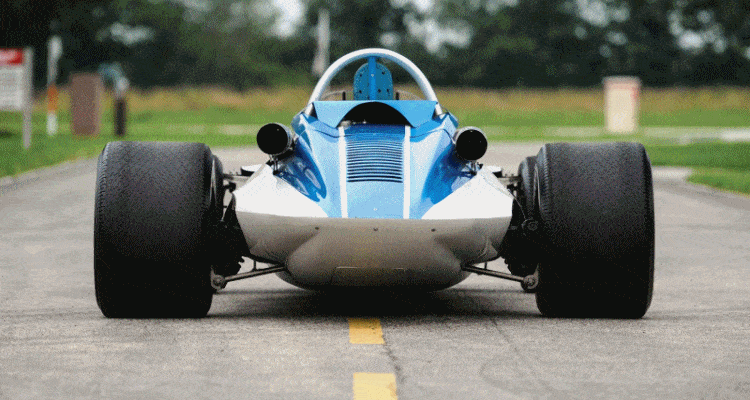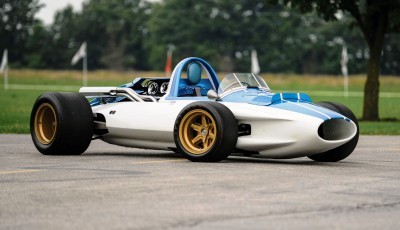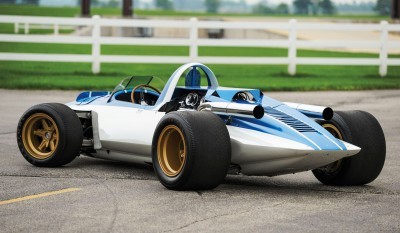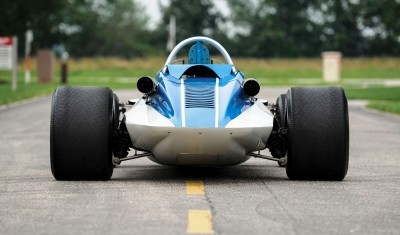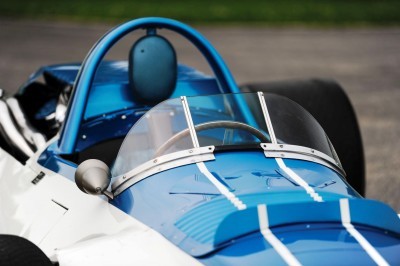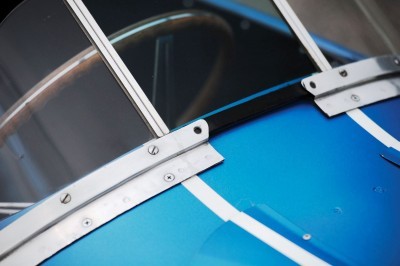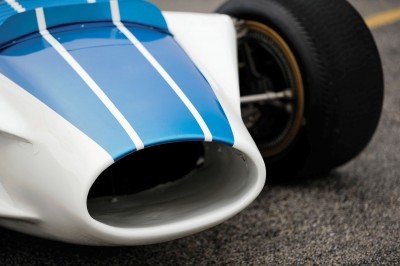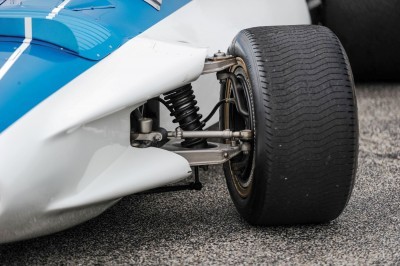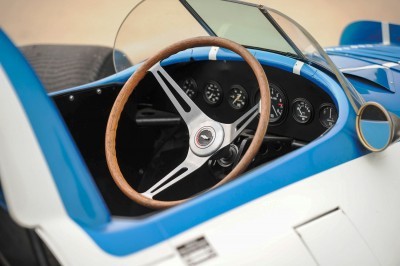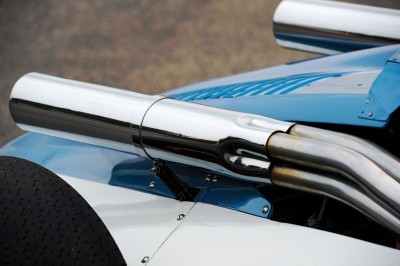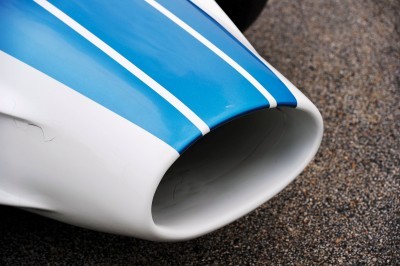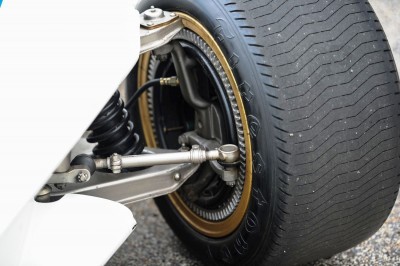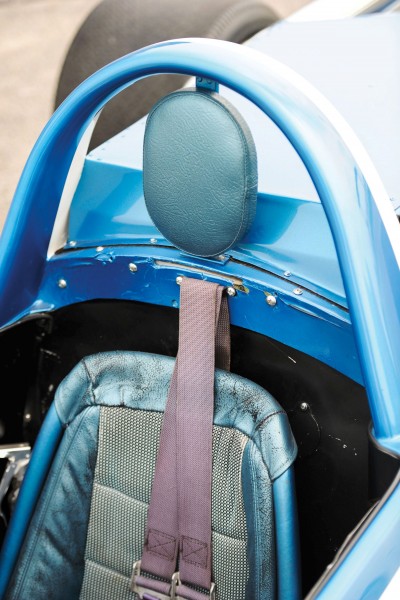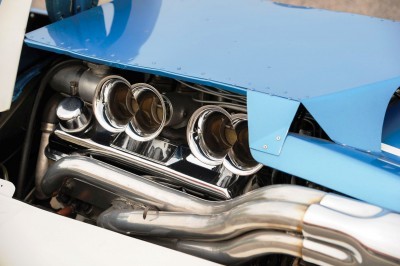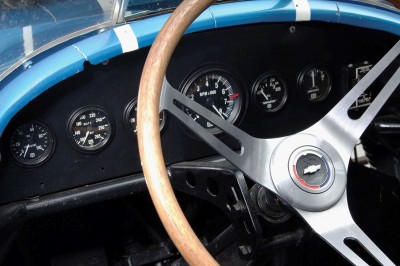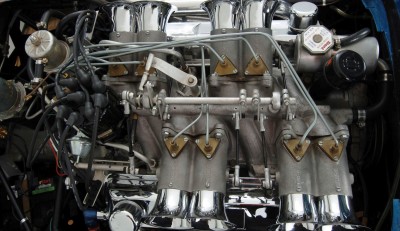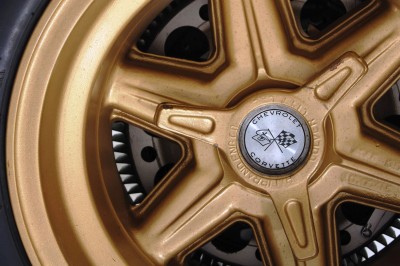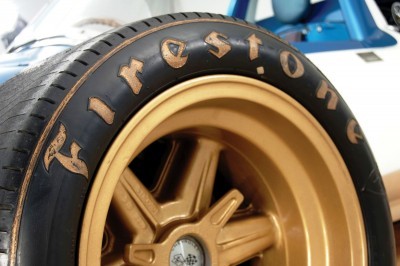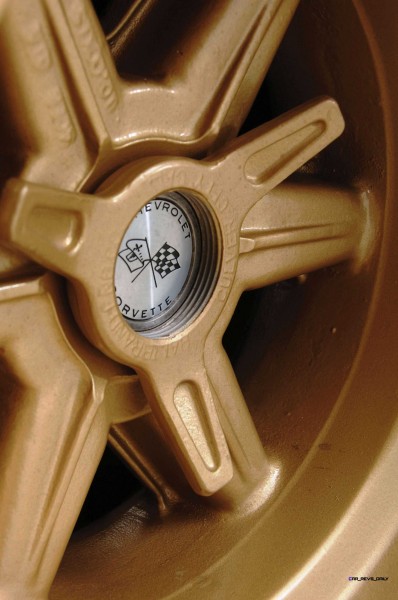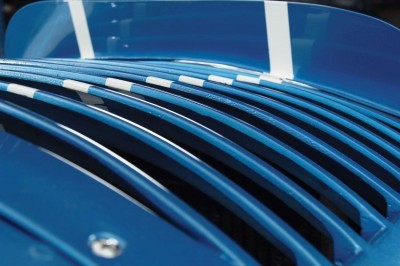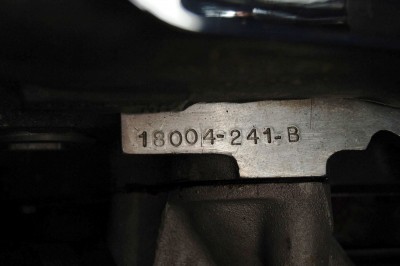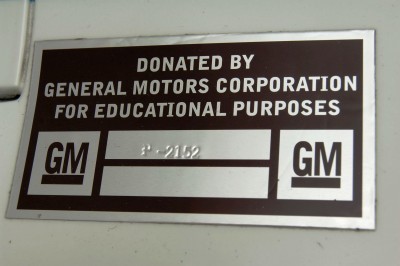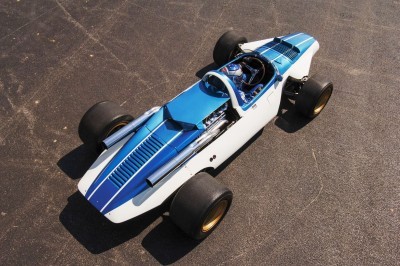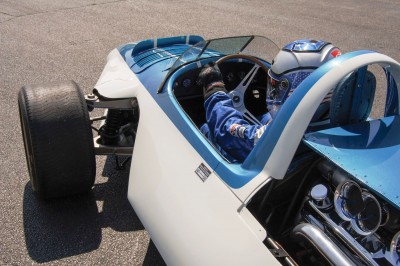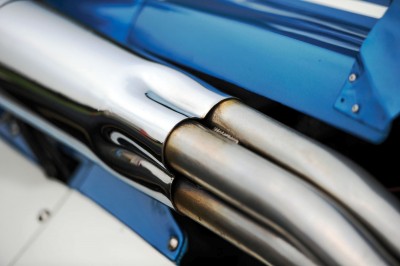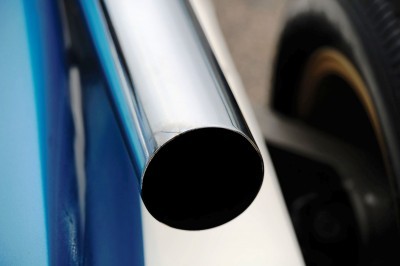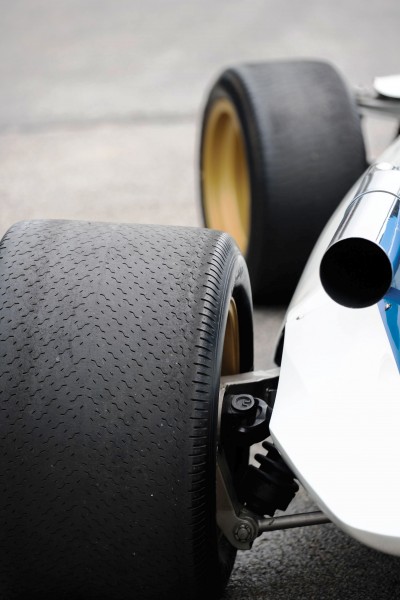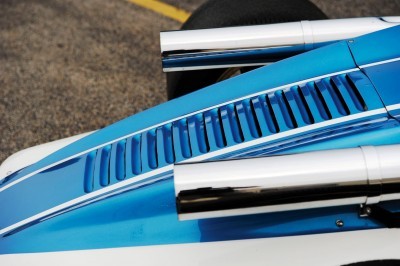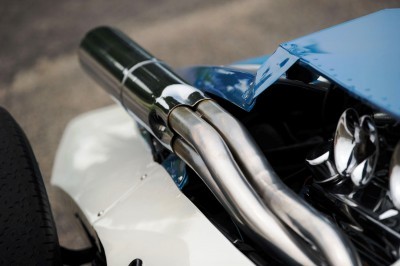 If there were two words more taboo than ‘racing’ at General Motors in the 1950s, they would be: open-wheeled and mid-engine.
If there were two words more taboo than ‘racing’ at General Motors in the 1950s, they would be: open-wheeled and mid-engine.
Despite all evidence to the contrary, the world’s largest automaker was a big prude when it came to racecars and production exotics. Safety pressure from DC was woven into the product planning and board rooms with an iron lock.
But the late 1950s opened many doors.
A total ban on racing sponsorship or factory participation was fading fast. Moral leaders and crazy think-tanks of the day were losing their grip on culture thanks to mass media and tectonic advancements in technology.
Flagship of this zeitgeist?
The Chevrolet Engineering Research Vehicle One.
1960 Chevrolet CERV I
RM
Monterey
13-15 August 2015
1960 Chevrolet CERV I
$1,300,000 – $2,000,000
- Chassis no. P-2152
377 cu. in. OHV aluminum experimental V-8 engine, four-speed manual transmission with a lightweight clutch, independent front and rear suspension with variable-rate coil springs, shock absorbers, and a front stabilizer bar, and four-wheel heavy-duty, iron-lined, cast-aluminum finned drum brakes. Wheelbase: 96 in.
- The most important GM Engineering vehicle ever offered at auction
- Zora Arkus-Duntov’s personal Corvette engineering test bed
- Used to develop the 1963 Sting Ray’s independent suspension, among other features
- Formerly of the Briggs Cunningham and Miles Collier collections
- Restored in its final 1964 cosmetic and mechanical form
- Innumerable awards and featured in numerous publications
- The car from which the modern Corvette was born
The Chevrolet Engineering Research Vehicle (CERV) was not originally created as a Corvette test bed, nor was it created to do entirely what its name claimed. Ostensibly, it would be a functional single-seat racing vehicle on which Chevrolet engineers could experiment, developing new tricks for the entire range of Bow Tie cars. However, projects in which GM Director of High Performance Vehicles Zora Arkus-Duntov, was involved generally had an ulterior motive. In this case, it was that CERV could actually win races.
Arkus-Duntov started dreaming mid-engined at Sebring in 1957, when, driving one of the specially built Corvette SS cars, he struggled with heating problems. Initially, he looked at a Corvette with a rear transaxle, built as a prototype that year and dubbed the “Q Corvette,” but when Chevrolet unofficially began to loosen their ban on racing-related activities yet also prepared to introduce the rear-engined Corvair, he was able to turn in a different direction. He proposed that a racing car with a Corvair-style drivetrain configuration could offset public skepticism about a rear-engined car.
Creating the racer was the task of Arkus-Duntov and his engineers, Harold Krieger and Walt Zetya. Initially known as the “R Car,” its specifications were purposely drawn as broadly as possible; its dimensions would make it eligible for the Indianapolis 500, but it would also fulfill its creator’s primary criteria of a vehicle suitable for climbing Pikes Peak. The “build” began in early 1960 but was not completed until late summer, due to Arkus-Duntov’s involvement with Briggs Cunningham’s Corvette Le Mans team.

Tom Burkart is the founder and managing editor of Car-Revs-Daily.com, an innovative and rapidly-expanding automotive news magazine.
He holds a Journalism JBA degree from the University of Wisconsin – Madison. Tom currently resides in Charleston, South Carolina with his two amazing dogs, Drake and Tank.
Mr. Burkart is available for all questions and concerns by email Tom(at)car-revs-daily.com.


